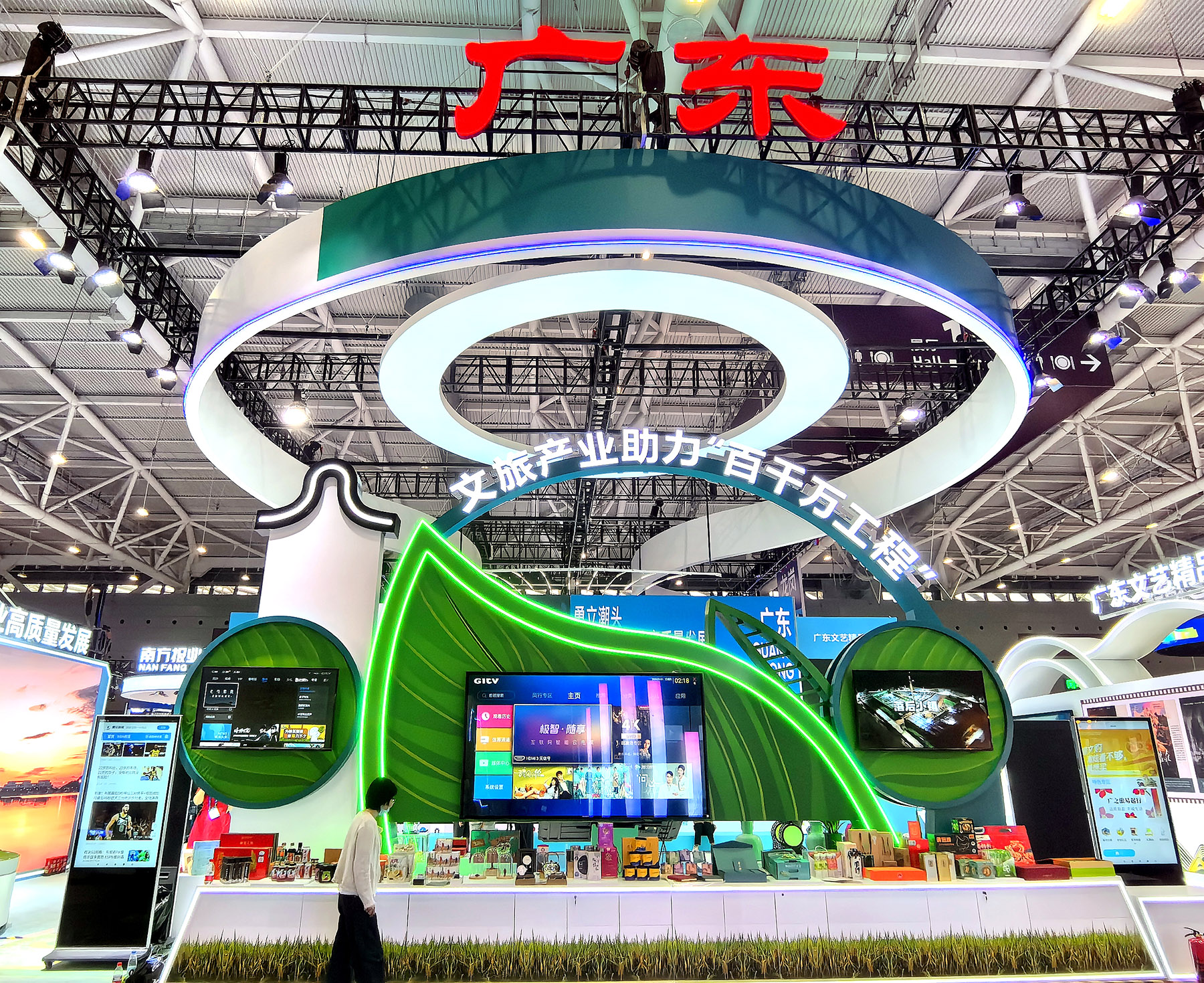Fair to showcase province's expertise and rich resources

South China's Guangdong province goes under the spotlight on Thursday when it hosts the 20th China (Shenzhen) International Cultural Industries Fair, which runs until May 27.
The event is reported to be a practical measure for Guangdong to consolidate its status as a cultural powerhouse. It also showcases the province's inheritance and development of Lingnan culture, as well as the vitality of its cultural industries.
READ MORE: BEYOND Expo, International Cultural Industries Fair, Women’s Volleyball Nations League
This year, the Guangdong exhibition group, consisting of 381 businesses from 21 cities across the province, together with State-owned enterprises under the management of the central government, as well as companies from Hong Kong and Macao, are showcasing some 20,000 cultural products at the cultural innovation exhibition zone of the Guangdong-Hong Kong-Macao Greater Bay Area, in a space spanning 20,000 square meters.
Their exhibits focus on tech-empowered new quality productive forces, such as applications of artificial intelligence-powered large model technology, and digital and creative industries; diverse cultural industries with local characteristics as well as cultural and service programs from across the province; and programs designed to boost spending on cultural services and products, including new product launches and debuts, and releases of heavyweight reports and policies.
The Guangdong exhibitor group has planned six themed activities to bolster consumer spending and business transactions. They include online trade events, offline promotional activities, forums, auctions and business matchmaking meetings.
Offline promotional activities, for example, will distribute consumption vouchers and focus on such sectors as cultural technology, intangible cultural heritage items, creative cultural products and cultural tourism.
As one of China's cultural powerhouses, Guangdong has been practicing creative transformation and innovative development of Lingnan culture for years. The province has also introduced a series of policies and measures that are at the national forefront in terms of cultural resources protection and brand promotion and utilization.
Among these initiatives, the Lingnan culture exploration project was announced by the Guangdong Cultural Heritage Administration and the Guangdong Institute of Cultural Relics and Archaeology in October 2023. It plans to trace the early human civilization and cultural development in the Lingnan region (Guangdong and some neighboring regions), over the next 12 years.
Also, achievements in Lingnan cultural inheritance are significant, evidenced by Chaozhou Gongfu Tea, which is included in the representative list of the Intangible Cultural Heritage of Humanity and the Legend of White Snake, a Cantonese opera film released in 2021, which has broken box office records in its category.
Guangdong is home to a branch of the China National Archives of Publications and Culture in Guangzhou. Opened in July 2022, the Guangzhou branch is regarded as a "seed gene bank" of Chinese culture and houses more than 2 million precious books and materials.
The province attaches importance to the excavation of historical sites, which is a highlight of local archaeological studies. The construction of land projects, such as the parks of the Modaoshan Site of the Paleolithic Age in Yunfu and of the Qingtang Site in Qingyuan, are progressing well.
As for underwater excavations, the Nanhai No 1 — a wooden cargo ship carrying Chinese porcelain which sank in the Song Dynasty (960-1279) — was selected as one of the top 100 archaeological discoveries of the century at the third China Archaeological Congress held in 2021. In November 2023, the overall protection project for the Nanhai No 1 was launched at the Guangdong Maritime Silk Road Museum, marking completion of the 10-year archaeological excavation.
In addition, four archaeological tourism routes were issued in April 2023, covering a total of 12 cities and 24 key archaeological sites in Guangdong. They have attracted a large number of visitors to see renowned cultural relics.
In recent years, cross-industry innovation has promoted and injected vitality into the development of Lingnan culture. For example, Yingge Dance, Cantonese Operas, martial arts, dragon boat racing and lion dances add a new appeal to Lingnan culture. Performed every Chinese New Year, Yingge Dance, a folk dance with a 300-year history from the Chaozhou-Shantou region, is gaining popularity both domestically and internationally.
Moreover, stage performances have brought traditional intangible cultural heritage items closer to audiences. On Jan 11, the Mandarin version of the musical drama I am what I am made its global debut at Guangzhou Opera House. The drama's Cantonese version was performed there on May 9 as the opening performance of the Guangzhou Art Season 2024.
ALSO READ: HK Coalition proposes developing strategies for four key industries
The musical drama, adapted from a movie of the same name, displays the intangible cultural heritage item of the lion dance and tells a touching story of a young boy pursuing his dreams through various twists and turns.
Guangdong has invested heftily in major cultural facilities in recent years, demonstrating its determination to fortify its foothold as a cultural powerhouse in China. Cultural landmarks have mushroomed one after another across the province in recent years. The latest one, the Bai'etan Greater Bay Area Art Center, opened to the public on May 1. Integrating the Guangdong Museum of Art, the Guangdong Intangible Cultural Heritage Exhibition Center and the Guangdong Literature Hall, it marks a new pinnacle of Lingnan culture.
Prior to this, the new art museums of Guangzhou and Shenzhen were opened last November.
Together with the Guyuan Art Gallery in Zhuhai, which is scheduled to be completed later this year, these cultural facilities will constitute a large art museum group covering about 300,000 sq m in the Bay Area.


